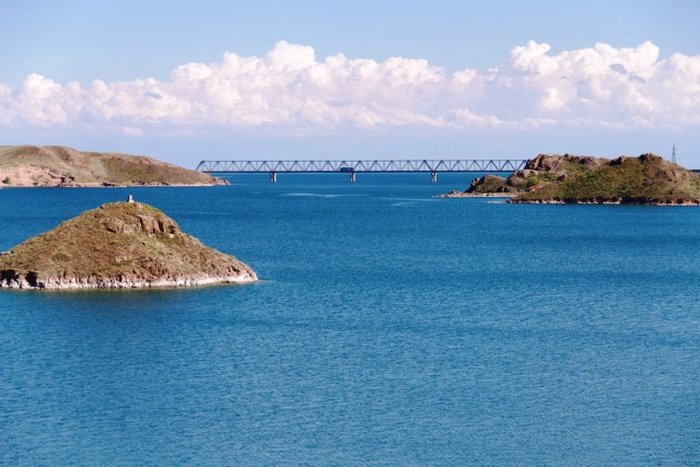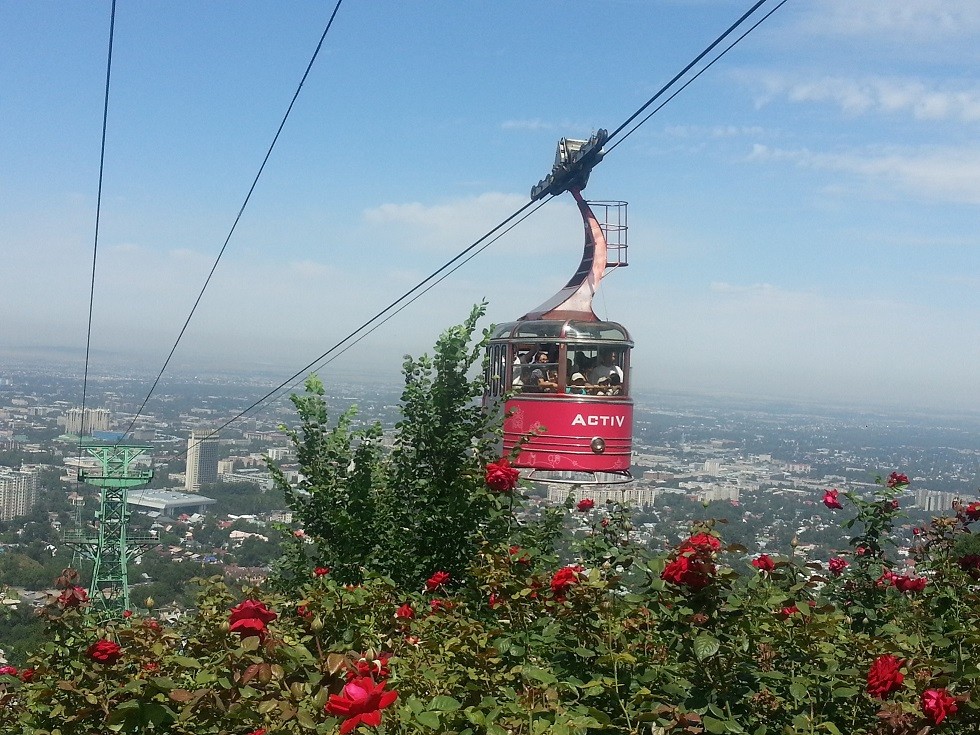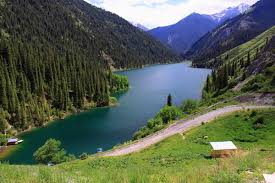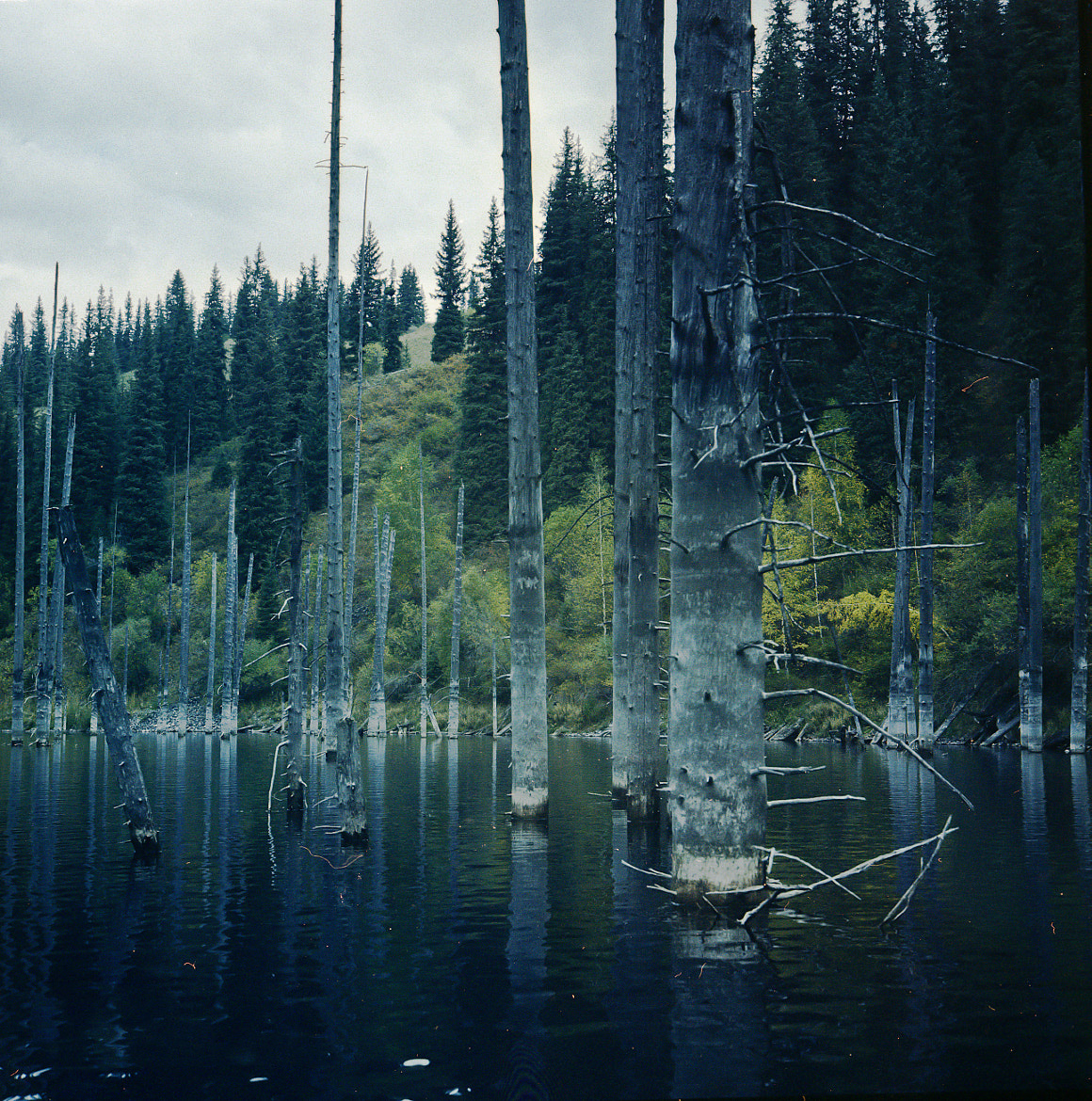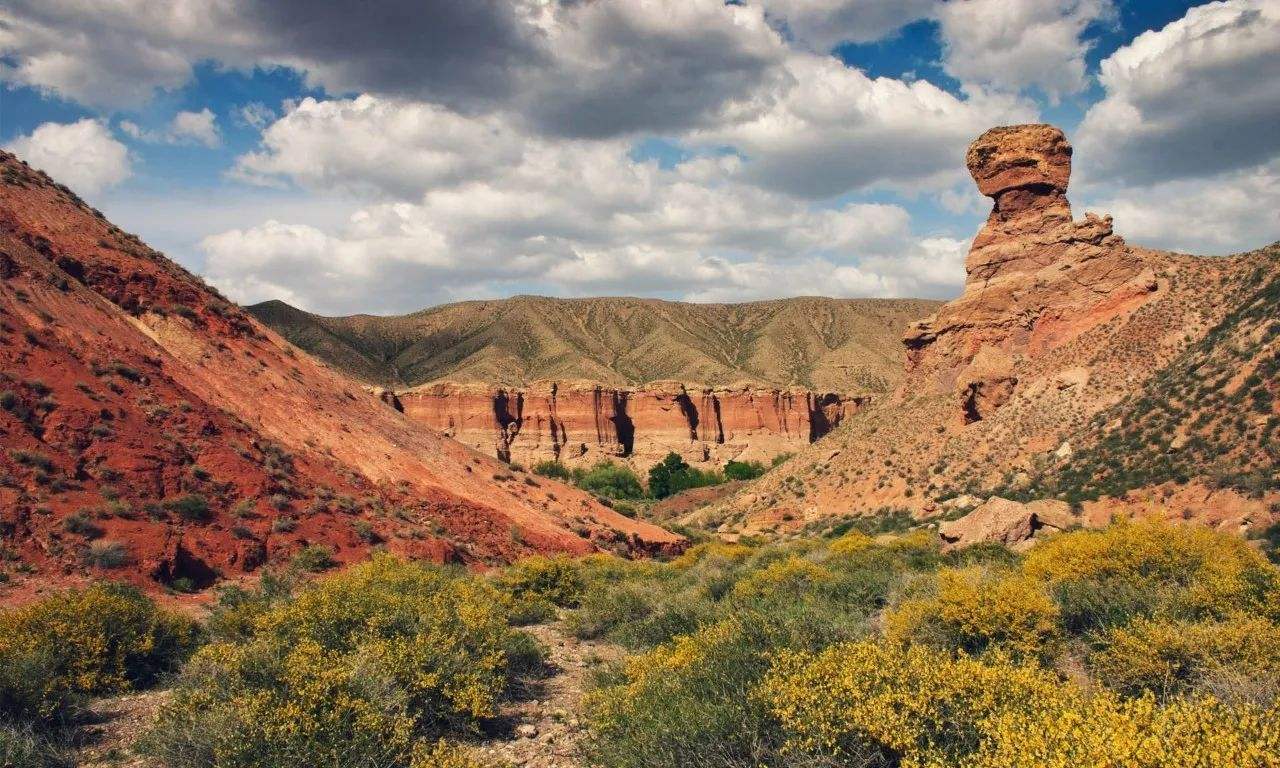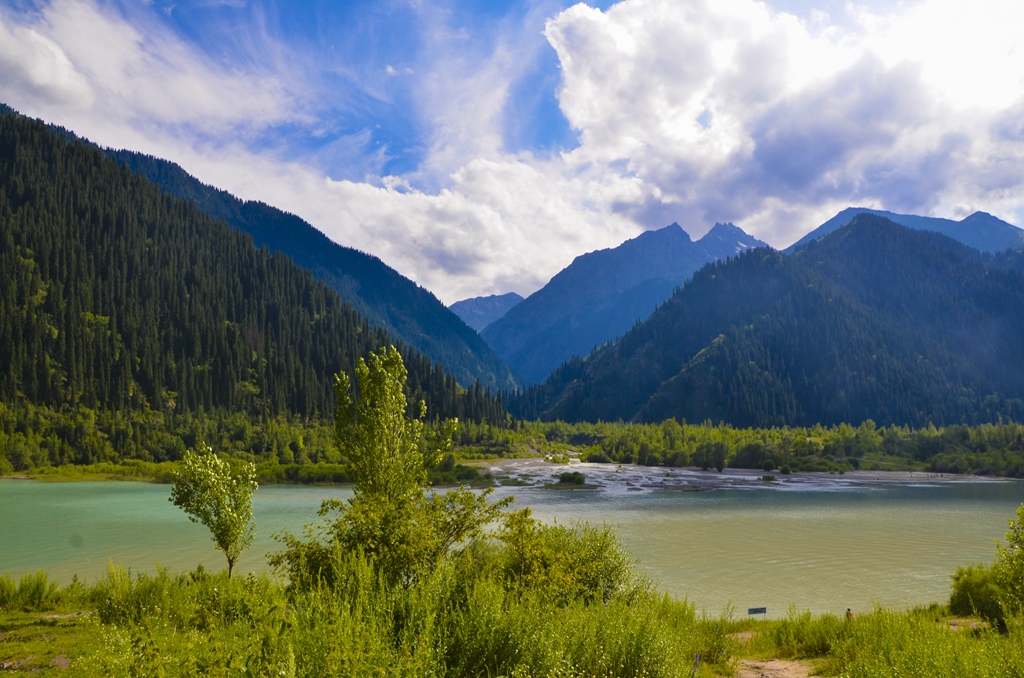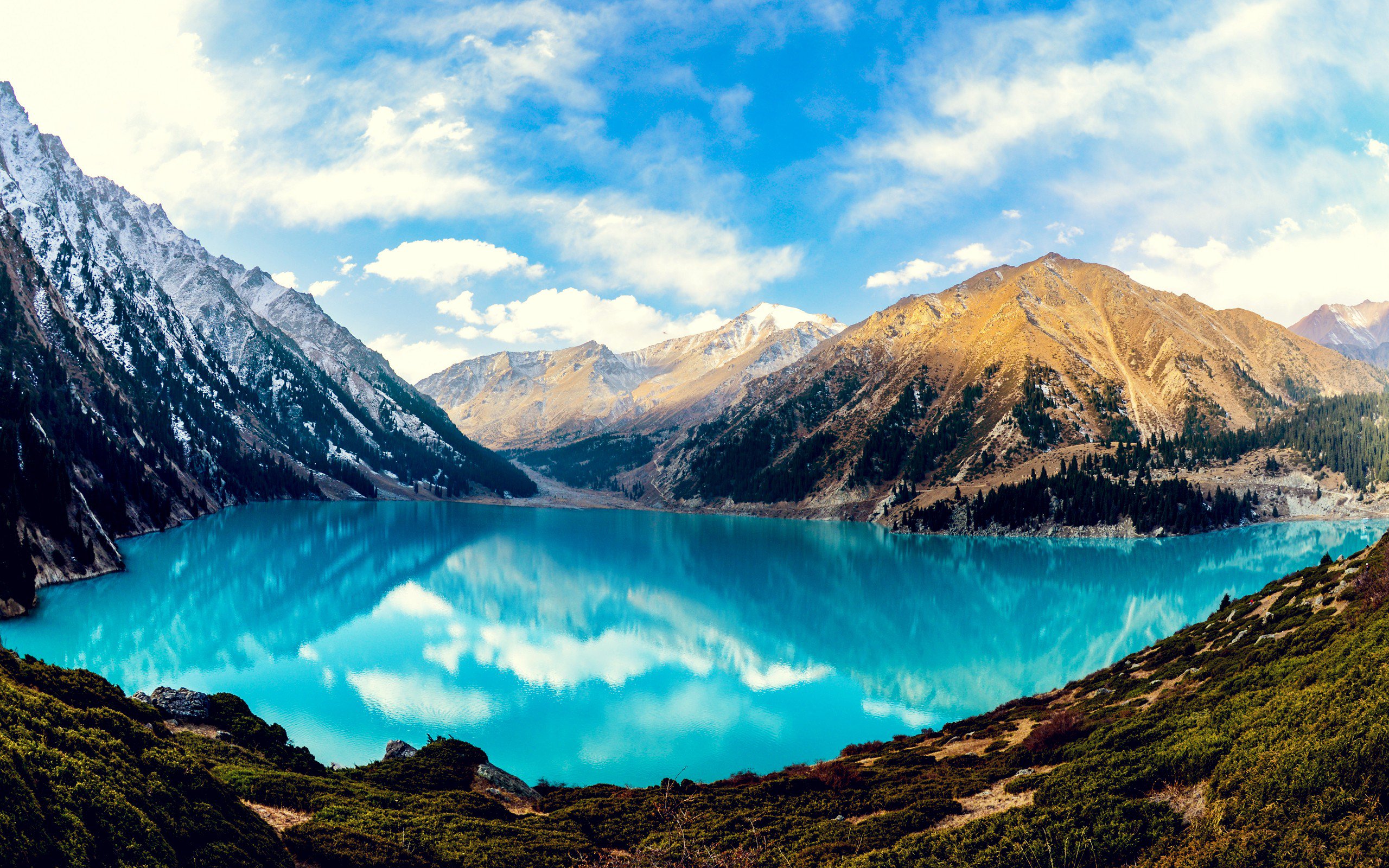Kapchagay Reservoir, also spelled Qapshaghay Bogeni Reservoir and sometimes referred to as Lake Kapchagay, is a major reservoir in Almaty Region in southeastern Kazakhstan, approximately 60 kilometers north of Almaty. The 140 kilometer long lake is formed by a dam on the Ile River which flows from the mountains in the east towards Lake Balkhash to the northwest. It is named after the town of Kapchagay, which is located on its western bank. During the summer months the lake attracts a number of tourists from Almaty, who frequently see its beachy shores on the weekends.
The Kapchagay dam was completed in late 1969 and began slowly filling the reservoir in 1970, over a period of 20 years. The hydroelectric project was also seen as important in that the lake would provide an abundant water supply and irrigation for arid farming in the region. However, environmentalists have expressed deep concerns about its environmental impact upon Lake Balkash, given that the equIlebrium and balance of water has been seriously disturbed. Between 1970 and 1985, the volume of Lake Balkash declined by 39 km3 to directly feed the Kapchagay Reservoir, and by 1987, Lake Balkash had reached its all-time low point in volume, dropping roughly 7 feet (2.2 meters) in depth. However, in 1988, this situation improved when the volume of Balkash increased once more from river discharge from the east, although the water quality had been dramatically reduced and became increasingly saline.
The reservoir has had a major impact upon fish populations, especially given that commercial fishing operations have been practiced in the reservoir, fueling the local economy. In 1975, 24 species of fish were recorded in Kapchagay Reservoir, but in 1980 this had fallen to 18, directly affecting the industry. However, between 1985 and 1991 as the river reached its current capacity, fish stocks in the lake stabIlezed and since 1980 there has been a marked growth in the fishing industry on the lake after its decline in the 1970s. The reservoir has also been responsible for rising groundwater levels which has made it impossible to grow crops on land adjacent to the lake in many parts. As a result, many agricultural villages in the area such as Akozek, Kerbulak and Chengildi are located several kilometers from the lake, rather than on its bank.
Kapchagay Reservoir serves as a favorite weekend resort for Almaty residents. The 140 km (87 mi) long reservoir features a stretch of sandy shore lined with numerous casinos. Although the reservoir boosts the local economy and draws many tourists, it also has as disruptive impact on the ecosystem, reducing the level and the quality of the water in the nearby lake and making the surrounding land unsuitable for farming.




